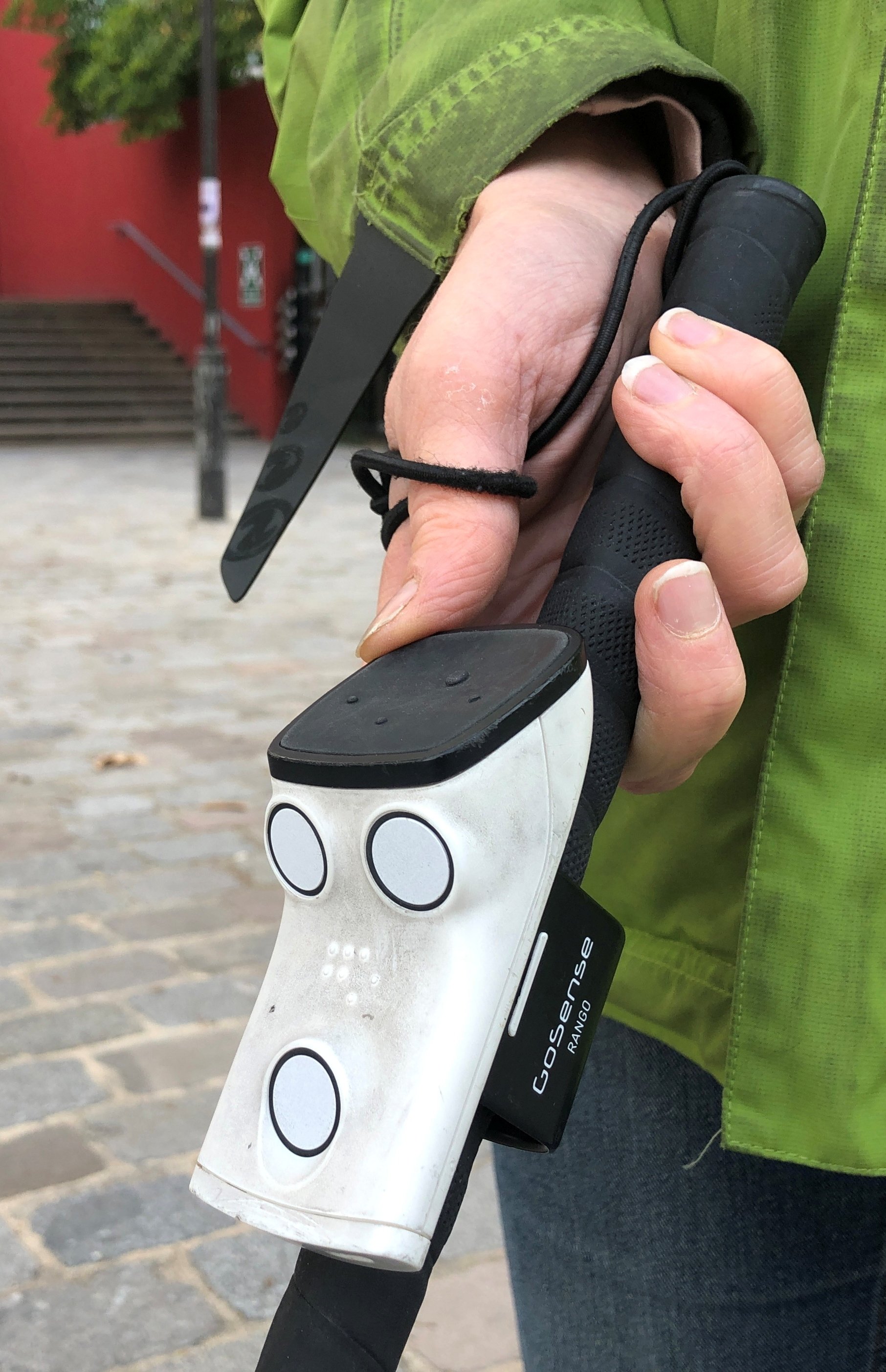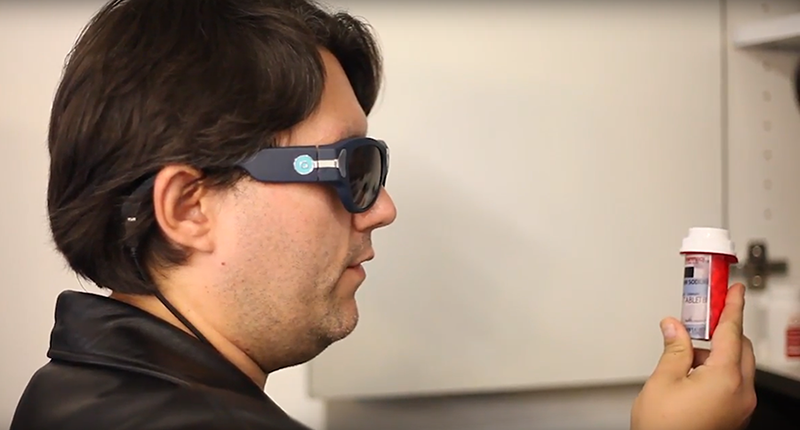Empowering Independence With Assistive Modern Technology for the Blind
The assimilation of assistive modern technology into the lives of people with visual disabilities stands for a considerable innovation in advertising self-reliance and self-sufficiency. From innovative screen visitors to innovative smart walking sticks, these devices not only improve day-to-day navigating and interaction however also empower customers to involve meaningfully in numerous elements of life. As we check out the myriad advantages and real-world applications of these modern technologies, it comes to be critical to examine the underlying aspects that contribute to their effectiveness and the potential for future growths in this important field.
Overview of Assistive Innovation

The advancement of assistive modern technology is based in concepts of inclusivity and empowerment. Technologies in software application, hardware, and sensory enhancements offer individuals with options customized to their details requirements. From display readers that convert message to speech, to responsive devices that share information through touch, these tools transform the means people engage with their surroundings.
Along with functional applications, assistive innovation cultivates better social addition and involvement in various fields, consisting of education and learning and employment (Wearable technology for low vision). As r & d remain to evolve, the capacity for assistive technology to additionally enhance the lives of visually damaged people continues to be promising, paving the means for a much more fair culture where everyone can flourish
Types of Assistive Instruments
A variety of assistive tools have actually emerged to sustain people with visual impairments, each developed to satisfy certain requirements and enhance daily functioning. These devices vary from low-tech solutions to sophisticated advancements, supplying varied choices for users.
Low-tech devices consist of magnifiers and large-print products that aid in analysis and writing. Braille devices, such as Braille slates and stylus pens, enable tactile reading and communication. Positioning and mobility help, like white walking canes, assist customers navigate their environment safely.
On the higher end of the spectrum, electronic magnifying systems and screen visitors offer substantial assistance. Electronic magnifiers allow customers to expand message and images on displays, while display readers transform electronic material into manufactured speech, assisting in access to details on smartphones and computer systems.
Mobile phone applications additionally play a crucial duty, offering functions like message acknowledgment and navigation aid. Wearable modern technology, such as wise glasses furnished with enhanced truth, is becoming an appealing tool to improve situational awareness.
Benefits of Assistive Technology
The assimilation of assistive technology considerably enhances the quality of life for people with visual problems. These modern technologies encourage individuals by promoting independence, allowing them to browse their settings more properly and do day-to-day jobs with better ease. For circumstances, screen visitors and magnifying software program permit people to access digital details, promoting specialist and educational possibilities that may have formerly run out reach.
In addition, assistive tools such as wise walking canes and general practitioners applications offer real-time navigating help, boosting mobility and safety. This raised autonomy not just boosts self-confidence however likewise motivates social involvement, allowing users to get involved more fully in their neighborhoods.
Assistive innovation additionally helps with interaction, helping users link with others through voice recognition and text-to-speech applications. This capacity is important for preserving connections and accessing vital details.
Additionally, the modification options readily available with many assistive modern technologies ensure that users can customize devices to their particular requirements, even more improving use and performance. Overall, the benefits of assistive modern technology for people with aesthetic impairments are extensive, advertising an extra comprehensive culture where every person can seek their objectives and ambitions.
Study and Success Stories
Highlighting the transformative influence of assistive modern technology, countless study show just how people with visual impairments have actually successfully integrated these tools into their lives. One compelling example entails a i was reading this college trainee who made use of screen reading software program to browse on-line resources and academic products efficiently. This modern technology not just facilitated her education and learning yet also enhanced her confidence in participating in discussions and team projects.
One more instance research features a specialist who employs a mobile phone application developed for navigating and item recognition. By utilizing this application, he has actually restored autonomy in both his individual and workplace, allowing him to commute independently and involve with coworkers a lot more effectively.
Furthermore, a retired person shared her experience with braille e-readers, which enabled her to access a vast array of literature and stay gotten in touch with her area with publication clubs.
These success stories highlight the crucial role of assistive modern technology in promoting self-reliance, improving lifestyle, and promoting social combination for individuals with aesthetic problems (Screen readers for the blind). By embracing these ingenious devices, users can get over obstacles and take chances that add to their individual and specialist fulfillment

Future Patterns in Assistive Technology
Development in assistive technology is poised to redefine the landscape of support for individuals with aesthetic problems. Emerging fads emphasize the integration of expert system (AI) eye problems and artificial intelligence, which improve the performance of devices that help with navigation and details accessibility. AI-driven applications are now qualified of translating aesthetic data in real-time, enabling individuals to engage with their setting a lot more separately.
Additionally, the growth of wearable modern technology is progressing quickly. Smart glasses geared up with enhanced fact (AR) can supply audio summaries of environments, transforming just how users engage with public areas. These tools not only advertise freedom however additionally foster social incorporation.
Furthermore, the Web of Things (IoT) is making homes smarter, enabling smooth connectivity in jennie glasses between daily home appliances and assistive gadgets. This connectivity empowers individuals by making it possible for automatic responses and voice-activated controls tailored to private needs.
Conclusion
In final thought, assistive modern technology plays a pivotal function in encouraging people with aesthetic impairments by boosting their independence and involvement with their environments. The varied variety of tools and applications readily available not only helps with navigating and interaction however likewise advertises social combination and chances for individual and expert growth. As innovations continue in this field, the capacity for improving the lifestyle for those with visual disabilities will expand, promoting better autonomy and empowerment.
